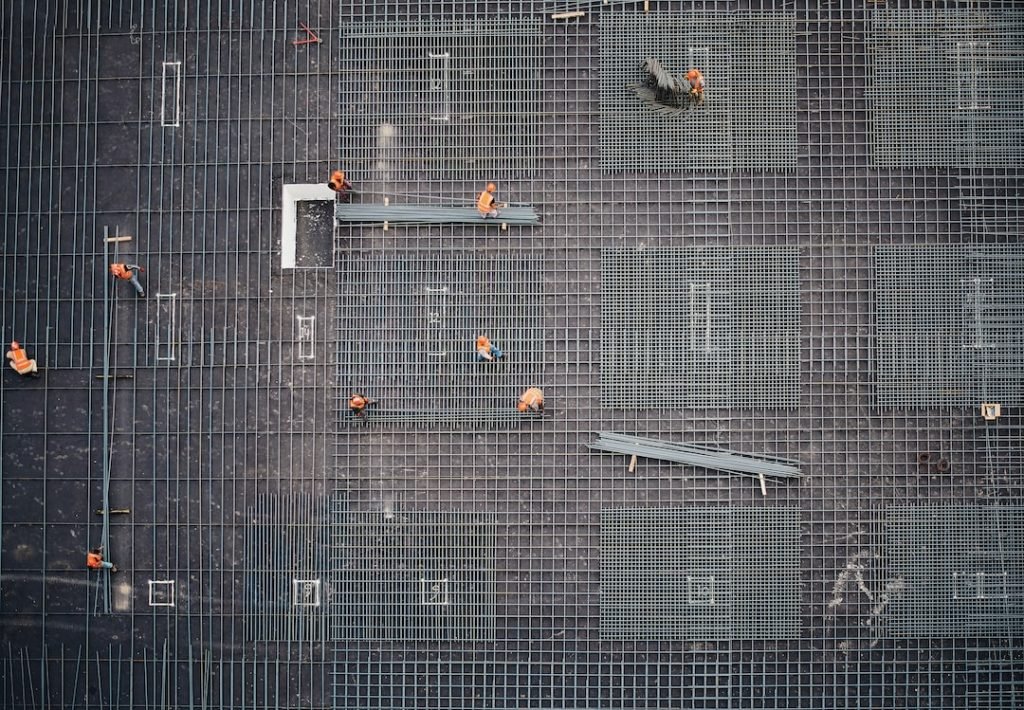

Construction and Trades: Understanding French Vocabulary on the Job Site
In today’s globalized world, being bilingual is becoming increasingly important in various industries, including construction and trades. The ability to communicate effectively with colleagues and clients who speak different languages can greatly enhance job performance and open up new opportunities. In the construction and trades industry, learning French vocabulary is particularly valuable, as French is widely spoken in many countries around the world and is an official language in several international organizations.
Being bilingual on the job site has numerous benefits. Firstly, it allows for better communication and understanding between team members, which can lead to increased efficiency and productivity. When everyone is able to understand each other’s instructions and requests, there is less room for error and misunderstandings. Additionally, being bilingual can help build stronger relationships with clients and stakeholders who may prefer to communicate in their native language. This can lead to improved customer satisfaction and increased business opportunities.
Table of Contents
ToggleCommon French Terms for Construction Materials
Understanding the French vocabulary for common construction materials is essential for anyone working in the construction and trades industry. Some of the most common materials used in construction include concrete, steel, and lumber. In French, concrete is called “béton,” steel is called “acier,” and lumber is called “bois de construction.” It is important to familiarize yourself with these terms so that you can effectively communicate with colleagues and suppliers.
In addition to these basic materials, there are also specific types of materials that have their own French names. For example, plywood is called “contreplaqué,” drywall is called “plaque de plâtre,” and insulation is called “isolant.” By learning these specific terms, you will be able to accurately describe the materials you need or are working with.
Understanding French Terminology for Building Structures
When it comes to building structures, there are many different parts and components that make up a building. It is important to understand the French vocabulary for these different elements in order to effectively communicate with colleagues and contractors. For example, walls are called “murs,” floors are called “planchers,” and roofs are called “toits.” By knowing these terms, you will be able to accurately describe the different parts of a building.
In addition to the basic parts of a building, there are also different types of structures that have their own French names. For example, a house is called “maison,” a commercial building is called “bâtiment commercial,” and a skyscraper is called “gratte-ciel.” By learning these specific terms, you will be able to accurately describe the type of structure you are working on or discussing.
Essential French Words for Electrical and Plumbing Work
Electrical and plumbing systems are crucial components of any building, and it is important to understand the French vocabulary for these systems in order to effectively communicate with colleagues and contractors. Some common terms for electrical systems include wires (“fils électriques”), outlets (“prises de courant”), and switches (“interrupteurs”). For plumbing systems, some common terms include pipes (“tuyaux”), fixtures (“appareils sanitaires”), and valves (“vannes”).
In addition to these basic terms, there are also specific types of electrical and plumbing components that have their own French names. For example, a circuit breaker is called “disjoncteur,” a water heater is called “chauffe-eau,” and a faucet is called “robinet.” By learning these specific terms, you will be able to accurately describe the different components of electrical and plumbing systems.
French Vocabulary for Carpentry and Woodworking
Carpentry and woodworking are important skills in the construction and trades industry, and it is important to understand the French vocabulary for these trades in order to effectively communicate with colleagues and contractors. Some common terms for woodworking tools include saw (“scie”), hammer (“marteau”), and chisel (“ciseau à bois”). For different types of wood, some common terms include oak (“chêne”), pine (“pin”), and maple (“érable”).
In addition to these basic terms, there are also specific types of woodworking techniques and wood products that have their own French names. For example, a dovetail joint is called “queue d’aronde,” a router is called “défonceuse,” and plywood is called “contreplaqué.” By learning these specific terms, you will be able to accurately describe the different techniques and products used in carpentry and woodworking.
Familiarizing with French Expressions for Masonry and Concrete Work

Masonry and concrete work are important skills in the construction and trades industry, and it is important to understand the French vocabulary for these trades in order to effectively communicate with colleagues and contractors. Some common terms for masonry work include bricklaying (“maçonnerie”), mortar (“mortier”), and trowel (“truelle”). For concrete work, some common terms include pouring concrete (“couler du béton”), concrete mixer (“bétonnière”), and concrete slab (“dalle de béton”).
In addition to these basic terms, there are also specific types of masonry and concrete components that have their own French names. For example, a brick is called “brique,” a foundation is called “fondation,” and a retaining wall is called “mur de soutènement.” By learning these specific terms, you will be able to accurately describe the different components used in masonry and concrete work.
Learning French Phrases for Roofing and Insulation
Roofing and insulation are important aspects of any building, and it is important to understand the French vocabulary for these trades in order to effectively communicate with colleagues and contractors. Some common terms for roofing materials include shingles (“bardeaux”), flashing (“solin”), and gutters (“gouttières”). For insulation, some common terms include insulation batts (“panneaux isolants”), vapor barrier (“pare-vapeur”), and attic insulation (“isolation du grenier”).
In addition to these basic terms, there are also specific types of roofing and insulation components that have their own French names. For example, a roof truss is called “ferme de toit,” a skylight is called “puit de lumière,” and a ridge vent is called “ventilation de faîtage.” By learning these specific terms, you will be able to accurately describe the different components used in roofing and insulation.
French Terminology for HVAC and Mechanical Systems
HVAC (heating, ventilation, and air conditioning) and mechanical systems are important components of any building, and it is important to understand the French vocabulary for these systems in order to effectively communicate with colleagues and contractors. Some common terms for HVAC systems include furnace (“fournaise”), thermostat (“thermostat”), and ductwork (“conduits”). For mechanical systems, some common terms include pumps (“pompes”), motors (“moteurs”), and valves (“vannes”).
In addition to these basic terms, there are also specific types of HVAC and mechanical components that have their own French names. For example, a heat pump is called “pompe à chaleur,” a condenser unit is called “unité de condensation,” and a pressure relief valve is called “soupape de sécurité.” By learning these specific terms, you will be able to accurately describe the different components used in HVAC and mechanical systems.
French Vocabulary for Landscaping and Outdoor Construction
Landscaping and outdoor construction are important aspects of any building project, and it is important to understand the French vocabulary for these trades in order to effectively communicate with colleagues and contractors. Some common terms for landscaping include gardening (“jardinage”), lawn (“pelouse”), and flower bed (“parterre de fleurs”). For outdoor construction, some common terms include paving (“pavage”), retaining wall (“mur de soutènement”), and fence (“clôture”).
In addition to these basic terms, there are also specific types of landscaping and outdoor construction components that have their own French names. For example, a sprinkler system is called “système d’arrosage,” a pergola is called “pergola,” and a deck is called “terrasse.” By learning these specific terms, you will be able to accurately describe the different components used in landscaping and outdoor construction.
Tips for Improving Your French Language Skills on the Job Site
Improving your French language skills on the job site can be challenging, but with some strategies and resources, it is possible to make progress. One strategy is to practice speaking French with colleagues and clients who speak the language. This can be as simple as greeting them in French or asking them how their day is going. By making an effort to speak French on a regular basis, you will become more comfortable with the language and improve your fluency.
Another strategy is to listen to French podcasts or watch French videos related to the construction and trades industry. This can help you become familiar with the vocabulary and terminology used in your field. Additionally, reading books or articles in French about construction and trades can also be helpful in expanding your vocabulary and understanding of the industry.
There are also resources available specifically for learning French in the construction and trades industry. Online courses, language exchange programs, and language learning apps can all provide structured lessons and practice opportunities. Taking advantage of these resources can help you improve your French language skills and become more confident on the job site.
Conclusion
In conclusion, learning French vocabulary in the construction and trades industry is highly beneficial for professionals in this field. Being bilingual on the job site can improve communication, enhance productivity, and open up new opportunities. By familiarizing yourself with the French terms for construction materials, building structures, electrical and plumbing work, carpentry and woodworking, masonry and concrete work, roofing and insulation, HVAC and mechanical systems, landscaping and outdoor construction, you will be able to effectively communicate with colleagues and contractors.
To improve your French language skills on the job site, it is important to practice speaking French with colleagues and clients, listen to French podcasts or watch French videos related to the construction and trades industry, read books or articles in French about construction and trades, and take advantage of resources specifically designed for learning French in the construction and trades industry. By continuing to practice and improve your French language skills, you will become more confident and proficient in your work.
If you want to learn French, you can register for classes here. We look forward to hearing from you and helping you become fluent in French!
If you want to learn Norwegian, you can register for classes here. We look forward to hearing from you and helping you become fluent in Norwegian.





